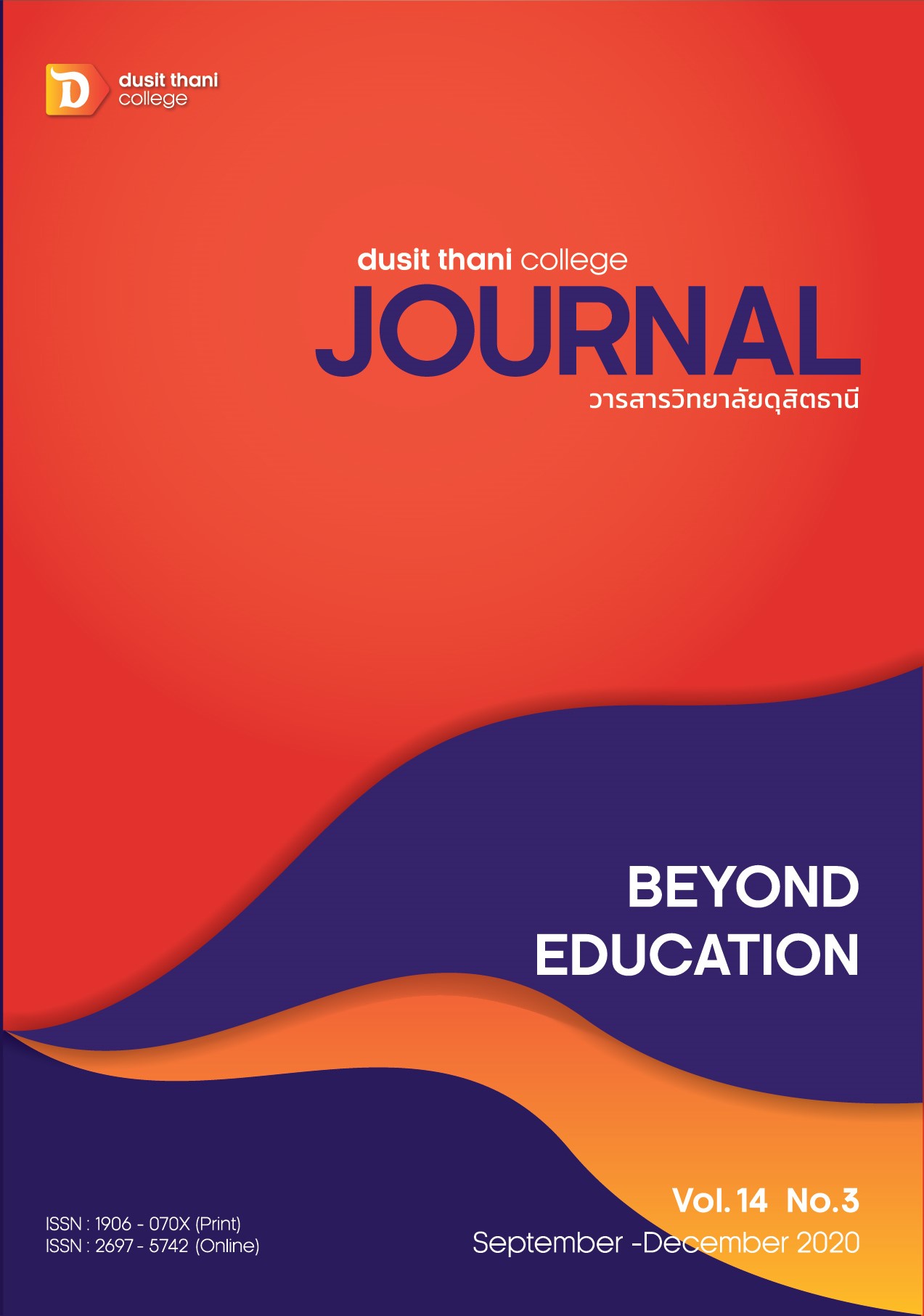Needs Assessment of the Community as a Culture Tourist Attraction along the Horse-carriage Route for Chinese-speaking Tourists in Lampang Province
Main Article Content
Abstract
The objective of this evaluation research was to assess the community's need for a cultural tourism site along the horse-drawn carriage route for Chinese-speaking tourists in Lampang Province. The data were collected with the first group of informants: community leaders along the horse carriage route. Personnel of agencies involved in tourism in Lampang Province 10 members of the Lampang Horse Carriage Association and the second group of information providers is a horse-drawn tour operator in Lampang Province, 322 people who live in community tourism sites along the 4 horse carriage routes. Research tools used Is a semi-structured interview form Needs assessment form the research tools were examined by three experts and were tested with a group of 35 data participants. Data were analyzed by basic statistics such as frequency, percentage, mean, standard deviation, and index of importance of order. Required or Modified Priority Needs Index: PNImodified. The results of the study found that the overall data condition/ community participation and community-based/community-based tourist care for cultural tourism sites along horse-drawn carriages were moderate ( = 3.33, S.D.= 0.40)/( = 2.95, S.D. = 0.67)/( = 3.42, S.D. = 0.38). The state of information/ participation of the community and the agency / reception of tourists that should belong to the community as a cultural tourism site along the horse carriage route was at the highest level ( = 4.58, S.D. = 0.38)/ ( = 4.54, S.D. = 0.49)/( = 4.57, S.D. = 0.52) and had the necessary index of priority. (PNImodified) was 0.375, 0.539, and 0.337 respectively, with the community the most needed in regard to 1) QR code labeling for all cultural tourism sites that the horse carriage passed in Chinese (PNImodified = 0.594). 2) Promoting tourism to include Chinese-speaking tourists to take part in cultural tourism along the horse-drawn carriage route in Lampang Province (PNImodified = 0.615). 3) Tourist sites in Lampang should have public relations media in Chinese (PNImodified = 0.541).
Article Details
Article Screening Policy
- All research and academic articles to be published must be considered and screened by three peer reviews in the relevant field / article.
- All articles, texts, illustrations and tables published in the journal are the personal opinions of the authors. Editors don't always have to agree. And no responsibility whatsoever is the sole responsibility of the author.
- The articles to be published must never be published. Where did you first publish? And not in the consideration of other journals If the audit found that there has been a duplicate publication It is the sole responsibility of the author.
- Any article that the reader sees as being plagiarized or impersonated without reference. Or mislead the work of the author Please let the journal editor know it will be your greatest blessing.
References
Kallayanee Kullachi. (2017). Created Guidebook for Community Based Tourism by Community Participation Bang Namphueng Sub-district, Prapradang District, Samutprakarn Province. Journal of Social Studies Srinakharinwirot University, 20.
Lampang Development Plan, Retrieved from file: ///C: /Users /WINDOWS10/ Downloads/ img_pl /part% 203n.pdf.
Krittiya Somsila. (2018). Participative Factors Affecting Community Based Tourism Management: A Case Study of Kham Muang, Kalasin Province. Dusit Thani College Journal, Dusit Thani College, 12(1).
Luxana Keyuraphan. (2016). A development model of Thai phuan community's tourism activity management to promote creative learining in Nakhon Nayok. Veridian E-Journal, Silpakorn University.9(2).
Ministry of Tourism and Sports. (2018). Statistics for foreign tourists entering Thailand, Retrieved from https://www.mots.go.th/more_news.php?cid=502&filename=index.
Natthaporn Dokboonnak and Thapakorn Thongnuch. (2013). Participation of communities in tourism management.Case Study in the Hundred Years Sam Chuk district of Suphan Buri Rajamangala University of Technology Suvarnabhumi.
Nantarat Charoenkul. (2010). Knowledge Management. Knowledge Management. Faculty of Education. Burapha University.
Petchara Budseeta. (2010). Marketing management of community-based on tourism of bank nakornchum,Kamphaengphet Province. Research journal Kamphaeng Phet Rajabhat University 16(1).
Potjana Boonkoum. (2014). Development of marketing communications model in cultural tourist attraction in the group of provinces located in the lower central region 2 of Thailand (Master’s thesis), Silpakorn University.
Sirichanya Praprutkit. (2010). An Evaluation of Attraction Site in Amphur Muang, Trad to Create the Ecotourism Route. Master thesis, M.Sc. (Ecotourism Planning and Management). Bangkok: Graduate School, Srinakharinwirot University.
Sittichai Wetsuwan, Pattama Ruinsuwankul, Rangsan Manee Lek. (2015). Needs Assessment of Needs for Developing Organizational Quality Management Model in the Primary Educational Service Area Office. Academic meeting report and research presentation National and international National group Education, 3 (6).
Suwimol Wongwanich. (2007). Needs Assessment Research. Bangkok: Tammada Press.
Tanyaporn Wanichritta. (2007). Knowledge management in community: a case study of ecotourism management by participation of the community, samut Songkhram province (Master’s thesis). Silpakorn University.
Tipaporn Traibun. (2014). Guidelines for potential development of historical tourism: Case study of Aranyik Knives Village, Phra Nakhon Si Ayutthaya Province (Master’s thesis). Bangkok University.
TRF organized a trip to develop and promote the Chinese tourist market in the north. Retrieved from https://www.trf.or.th/trf-events-activities/11771-familiarised-trip-lanna-oriental-trip.
Touchchapon Boonbooth. (2012). Website development on information system database of archaeological sites: A case study of archaeological sites in the western region of Thailand (Master’s thesis). Silpakorn University
Wanida Siriworasakul and Watcharin Intapromae. (2016).The knowledge management for ecological and cultural tourism development in Kokoet, sub-district,Bangpa-in district ,Pranakhon si ayutthaya province. Phranakhon Rajabhat Research Journal (Humanities and Social Sciences) 11(1).
Wannee Kamket. (2008). Research methodology in behavioral sciences. (2th ed.). Bangkok: Chulalongkorn University Press.


